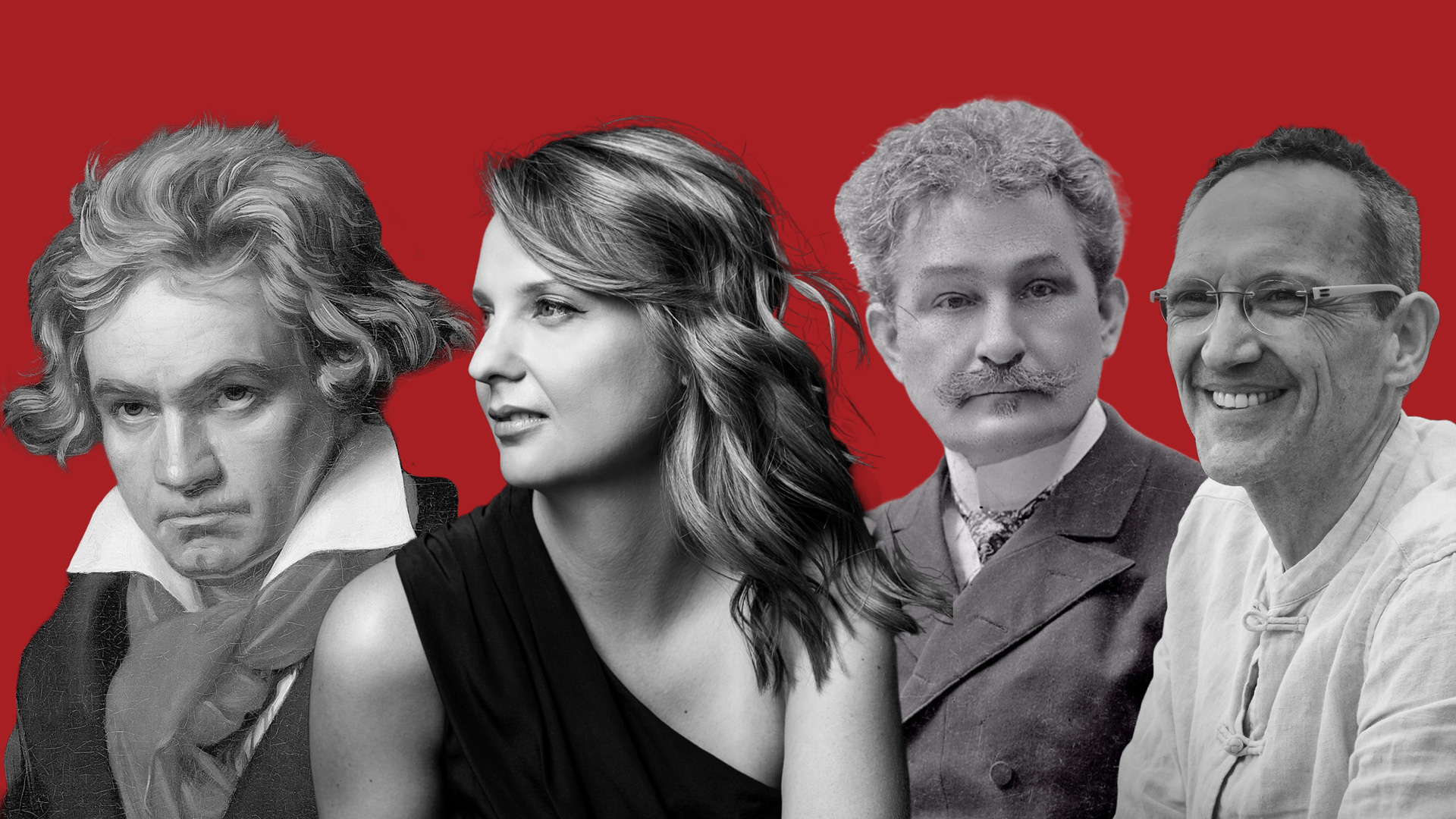Music writer Alison Wormell explores the music of our national tour, Rapture, which tours Australia between Wed 7—Thu 22 May.
In 1833 a critic wrote about a performance of Beethoven’s quartets “one sits in front of only four instruments…here one encounters the essence of the word ‘rapture’.” This program explores the sheer breadth of emotion expressed in string quartet writing. From Beethoven’s fascination with compressing ideas to Janáček’s deeply personal portrait of his lover, we discover their inner obsessions. Perica and Golijov’s more modern works both draw inspiration from experiences in ‘the city that never sleeps’ and challenging life events. Of course, great joy only exists in contrast to loss, fear, despair and conflict, so expect to be taken on a journey from the highest of highs to the lowest of lows.
The title of Ludwig van Beethoven’s (1770-1827) String Quartet No.11, Serioso (1810) doesn’t seem to promise happiness, but is nevertheless rich in emotion. It’s a succinct quartet, brief but passionate, and reflects Beethoven’s increasing fascination with cramming lots of interesting ideas into short movements. This is Beethoven’s last ‘middle period’ quartet, and looks ahead to his late quartets which were written for Beethoven’s own enjoyment. But there is a lot for us to enjoy too! Imagine Beethoven asking himself “how varied and interesting can I be in as compact a way as possible?”
The first movement is a punchy and continuously evolving conversation between the initial explosive scurrying notes and more lyrical motifs. In comparison, the second movement seems sweet and lighthearted but creative use of harmonic dissonance lends it a wistful and melancholic air. The tempo quickens in the Scherzo and Trio which flip-flops between the two sections with increasing rapidity. Beethoven completes the work with a fourth movement full of vindication that eventually evaporates into euphoria.
Australian jazz composer Vanessa Perica’s (b.1982) new string quartet No Feeling is Final (2025) depicts a tumultuous period in her life. The heart of the piece is the inner two movements which depict the experience of Perica’s husband suddenly requiring open heart surgery. We hear their joint courage, determination, fear and anticipation. Suddenly, the driving rhythms are suspended; it’s time for the surgery. Dreamlike, the music moves into a place of amazement and positivity as he recovers.
Release comes in the fourth movement with Perica’s invigorating yet angsty scene of a trip to New York. We return to the joyful, rapturous feeling that has its genesis in the first movement, which responds to the world’s violence by making music “more intensely, more beautifully, more devotedly than ever before” – a statement from Leonard Bernstein.
Similar to Perica, Czech composer Leoš Janáček’s (1854-1928) String Quartet No.2 Intimate Letters (1928) explores the heady experience of loving someone devotedly. This work is characteristic of his later pieces. Many of these are erotically inspired by Kamila Stösslová – the wife of an antiques dealer – with whom he exchanged hundreds of adoring letters. This piece uses the repetition of fragments and juxtaposing themes to create a portrait of Kamila.
The opening movement of Intimate Letters is filled with wonder, depicting Janáček’s first meeting with Kamila. Janáček’s theme is bold compared to Kamila’s graceful and at times tentative melody, first played by the viola. This movement – and indeed the whole piece – tries to reconcile these two themes, creating a massive kind of theme-and-variations. The following movement introduces a new ‘child’ theme; it is a lullaby full of intimacy and bliss about Kamila bearing their (fictional) child. The third movement is cheerful, dissolving into an ethereal image of Kamila – beautiful and untouchable. Finally there is a fulfilment of Janáček’s longing in the last movement which is a “song of victory”.
Osvaldo Golijov’s (b.1960) work Tenebrae (2003) is also extremely evocative. Originally scored for soprano, clarinet and string quartet, Tenebrae explores the contradicting perspectives of viewing the Earth from afar (beautiful) and close up (painful). It’s inspired by Golijov’s experience of violence as an Argentinian Jew, and seeing the Earth as a dot in space at the New York planetarium. Throughout the work there is a feeling of suspension; as if we are hanging in space, viewing the world from above. Golijov’s writing is extremely textural, with gritty sounds contrasting with ethereal harmonics. You may notice some moments that combine this modern sound world with baroque harmonies. Golijov has borrowed material from French Baroque composer Couperin’s Troisieme Leçon de Tenebrae which lends this meditative work an almost religious, prayerful feeling.
© Alison Wormell 2025
ABOUT THE AUTHOR
Alison Wormell (they/them) is a music writer whose work focuses on demystifying classical music. Alison has written for Gramophone’s Opera Now Magazine, Southbank Sinfonia, Australian String Quartet, Lapland Chamber Orchestra, Australian Youth Orchestra, Cut Common Magazine, and Things Musicians Don’t Talk About.
